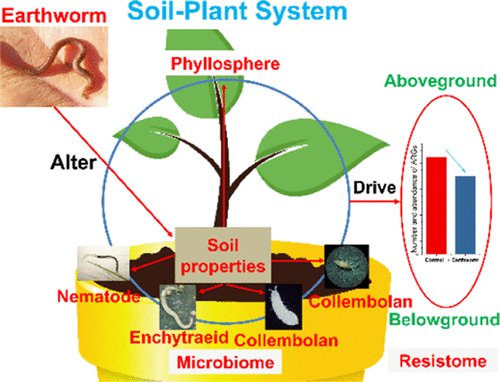
Now, you might be wondering why we should care about these little guys. Well, microworm populations can significantly impact your aquarium’s food chain and even offer insights into soil health if you’re into gardening. However, too many microworms can cause problems just as quickly as too few can. Let’s dive into the ecological benefits and drawbacks of these tiny creatures, exploring how they fit into the bigger picture.
What Are Microworms?
Before we can discuss their ecological benefits and drawbacks, let’s clarify what microworms are. Microworms are tiny, segmented roundworms, often just about 1-2 millimeters long. You can find them in moist environments, often thriving in substrates rich in organic material. They’re commonly used as live food for baby fish and other small pets, and they reproduce quickly, making them an attractive option for aquarists.
These tiny worms feed primarily on decaying organic matter, which means they play a vital role in breaking down waste and recycling nutrients in aquatic and terrestrial environments. Imagine them as nature’s clean-up crew, working tirelessly to ensure that ecosystems remain balanced and healthy. And while they’re small, their impact is anything but negligible.
Benefits of Microworms in Ecosystems
Nutrient Recycling
One of the main benefits of microworm populations is their ability to recycle nutrients. When they consume organic matter—like dead plants or leftover food—they break it down into simpler forms. This process enriches the substrate, making nutrients more available to plants and beneficial microorganisms. Picture it as a tiny factory working round-the-clock to turn waste into nourishment. This nutrient recycling helps create a balanced ecosystem, supporting a variety of organisms.
Food Source for Aquatic Life
Microworms are also an essential food source for baby fish and other small aquatic species. Their small size means they can be easily consumed by fry (young fish) and invertebrates, providing necessary protein and energy for growth. Think of them as tiny appetizers in the sea, giving new life the energy it needs to thrive. By supporting the health of juvenile fish, microworms contribute to the overall biodiversity and resilience of aquatic ecosystems.
Role in Soil Health
When it comes to gardening, microworms can also play a beneficial role in soil health. They help decompose organic materials, increasing soil fertility. Healthy soil leads to robust plant growth, which in turn supports diverse animal life. Imagine your garden as a bustling city; microworms are the diligent workers ensuring everything runs smoothly. With the right balance of microworms, a garden can flourish, thriving with life and beauty.
Drawbacks of Microworm Populations
Overpopulation Issues
While microworms have their benefits, they can also lead to issues when their populations grow unchecked. In an aquarium, for instance, an explosion of microworms can result in competition for resources, leading to stressed fish and an imbalanced ecosystem. If you think of it like a buffet, too many diners can lead to limited food for everyone. Finding a healthy balance is key; too many microworms can throw the ecosystem out of whack.
Potential Disease Vectors
Another drawback to consider is that microworms can carry pathogens, which might affect fish and other aquatic life. When their populations spike, the risk of spreading disease can increase, resulting in unhealthy habitats. It’s a bit like having too many guests at a party who might carry germs; the more crowded it gets, the greater the risk. Regular monitoring and management of microworm numbers can help mitigate these risks.
Impact on Aquatic Plant Life
Lastly, a high population of microworms can impact aquatic plants negatively. If they consume too much organic material, they could potentially interfere with nutrient absorption for aquatic plants. We want a balance, where plants and these tiny creatures can coexist without one overpowering the other. Like a harmonious orchestra, if one section plays too loud, the whole performance can be thrown off.
How to Manage Microworm Populations
Monitoring Levels
To keep your microworm populations healthy, regular monitoring is essential. Check your aquarium or garden regularly for signs of overpopulation, such as excessive wriggling worms or unhealthy-looking aquatic life. This is your first line of defense in maintaining a balanced ecosystem. Just like keeping an eye on your garden’s growth, being proactive helps prevent big issues down the line.
Regular Maintenance
Implementing regular maintenance routines can help manage microworm populations effectively. This includes removing excess waste and uneaten food, which can contribute to microworm overpopulation. Think of maintenance as a good tidying-up session; it can make all the difference! Also, frequent water changes in aquariums can help keep conditions less favorable for uncontrolled microworm growth.
Introducing Natural Predators
Another approach to managing microworm populations is to introduce natural predators. Small fish, like guppies or tetras, can help keep microworm populations in check while benefiting from the free food source. Just like having a friendly neighbor help you keep your garden tidy, adding the right fish can create a balanced environment.
Understanding the ecological benefits and drawbacks of microworm populations is fundamental for anyone interested in aquariums or gardening. These tiny creatures do more than just squiggle around; they have significant roles in nutrient recycling and serving as food sources. However, it’s crucial to keep their populations in check to prevent potential problems, such as overpopulation or disease spread.
By monitoring your microworm levels and maintaining a balanced ecosystem, you can enjoy the benefits they offer while minimizing any drawbacks. So, the next time you encounter these small but mighty worms, you can appreciate their role in the grand scheme of nature—like a small piece of a much larger puzzle.
